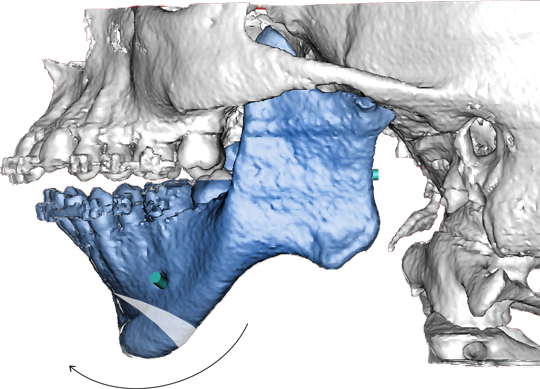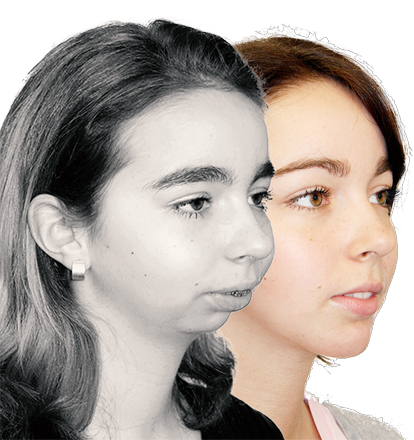Chin dysplasia/corrections
An asymmetric facial profile can also be caused by a malformation of thechin. However, the position of the jaw and bite can be completely normal in these cases.
Your psyche suffers first and foremost when your chin is too large or too small, protrudes or recedes too much (receding chin, double chin, low hanging mylohyoid). Chin deformities can often lead to a perceived abnormality of the facial profile. Sometimes a protruding chin can prevent lip closure, causing functional problems. A malformation of the chin can also often occur in connection with dysgnathia. Genioplasty significantly improves your facial profile, leading to a considerable level of facial harmony.

The medically indicated correction of the lower jaw and chin was carried out to improve the occlusion, the speaking and swallowing function. For this purpose, the bone is loosened from the inside using a minimally invasive technique without a visible scar and moved to the pre-calculated position. If the chin is too large, ablation of the bone is sometimes sufficient. In any case, you should refrain from introducing foreign materials such as silicone to ensure a sustainable result.

Surgery is carried out exclusively through the oral cavity and while the patient is under general anesthesia. The chin bone is exposed through a mucosal incision in the oral vestibule. The chin is freed so that it can be moved. After repositioning the chin in the predetermined position, it is secured with metal plates (titanium). A chin reduction either involves removing some of the bone or removing a segment and joining the remaining segments.
Implants are not recommended (silicone). The chin carries muscles that affect our facial expressions and span across the base of our mouth (keyword double chin). To guarantee a natural appearance, it is therefore important to keep this complex system intact.
 Courtesy of Dr. Esnault (Paris)
Courtesy of Dr. Esnault (Paris)